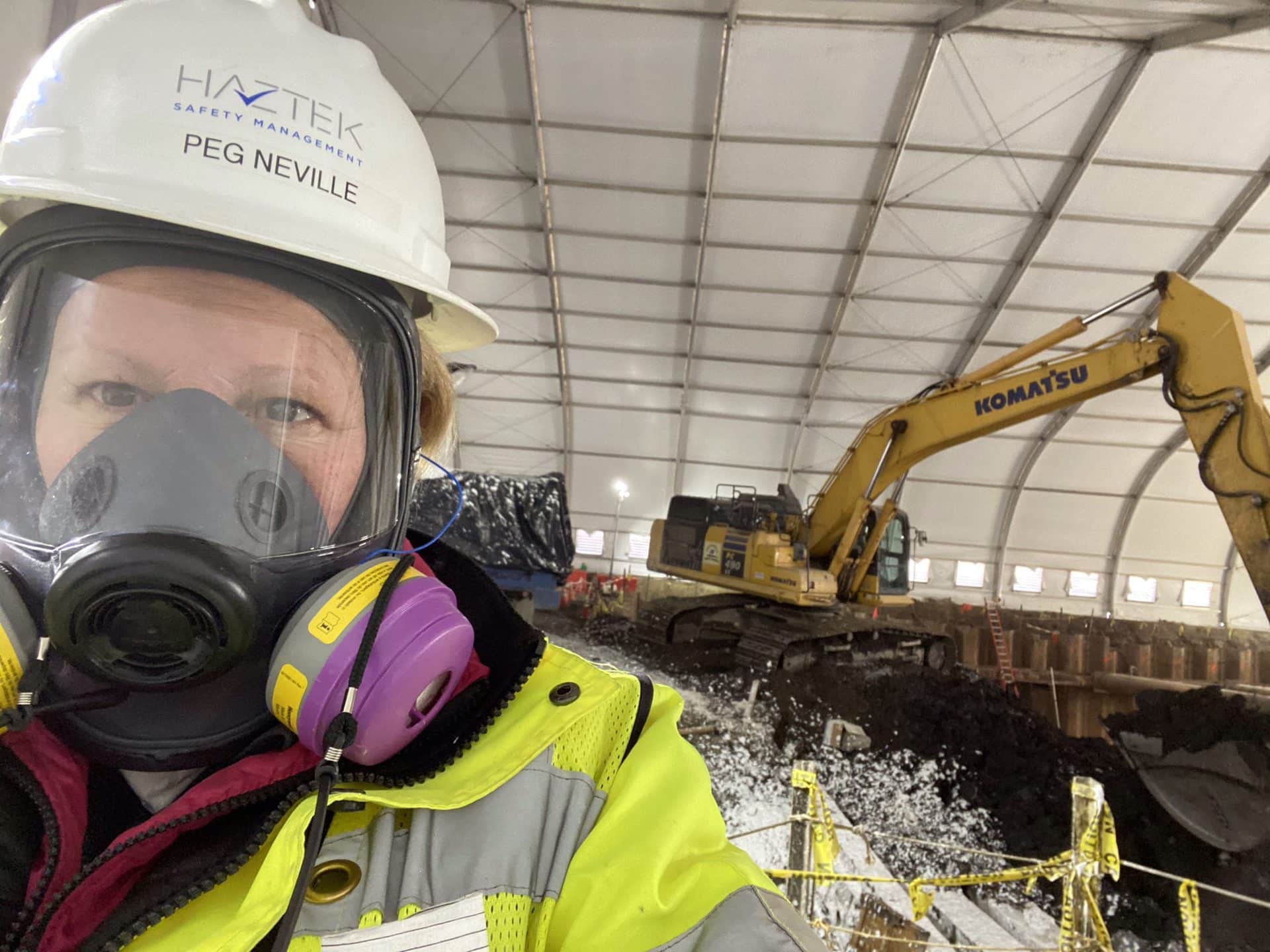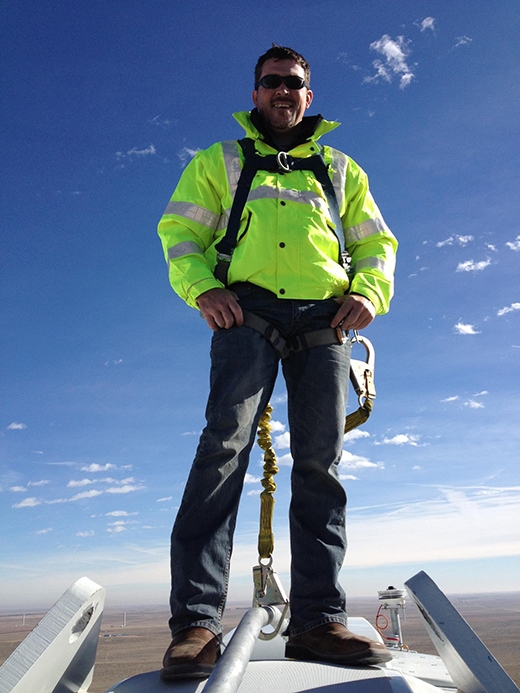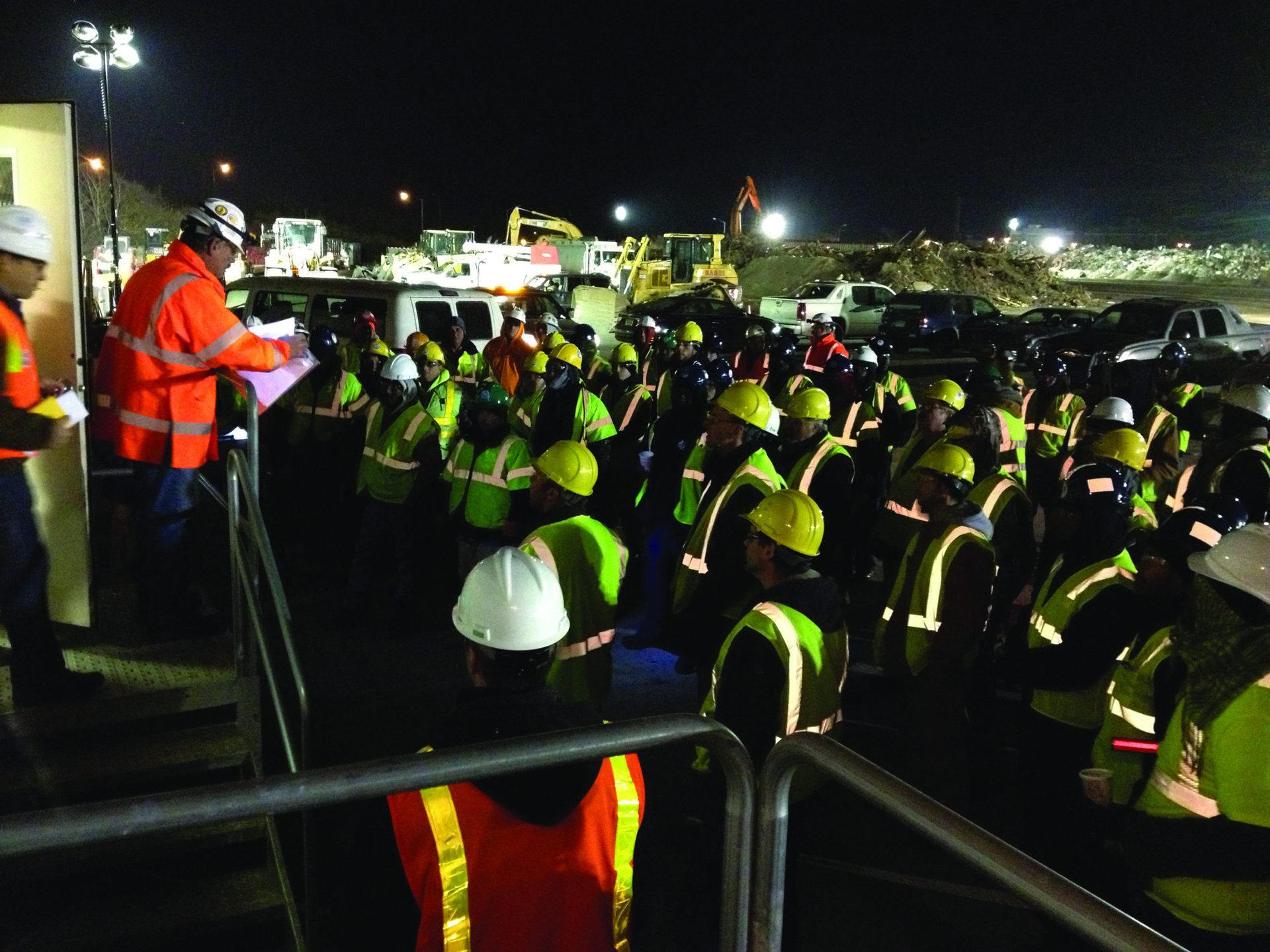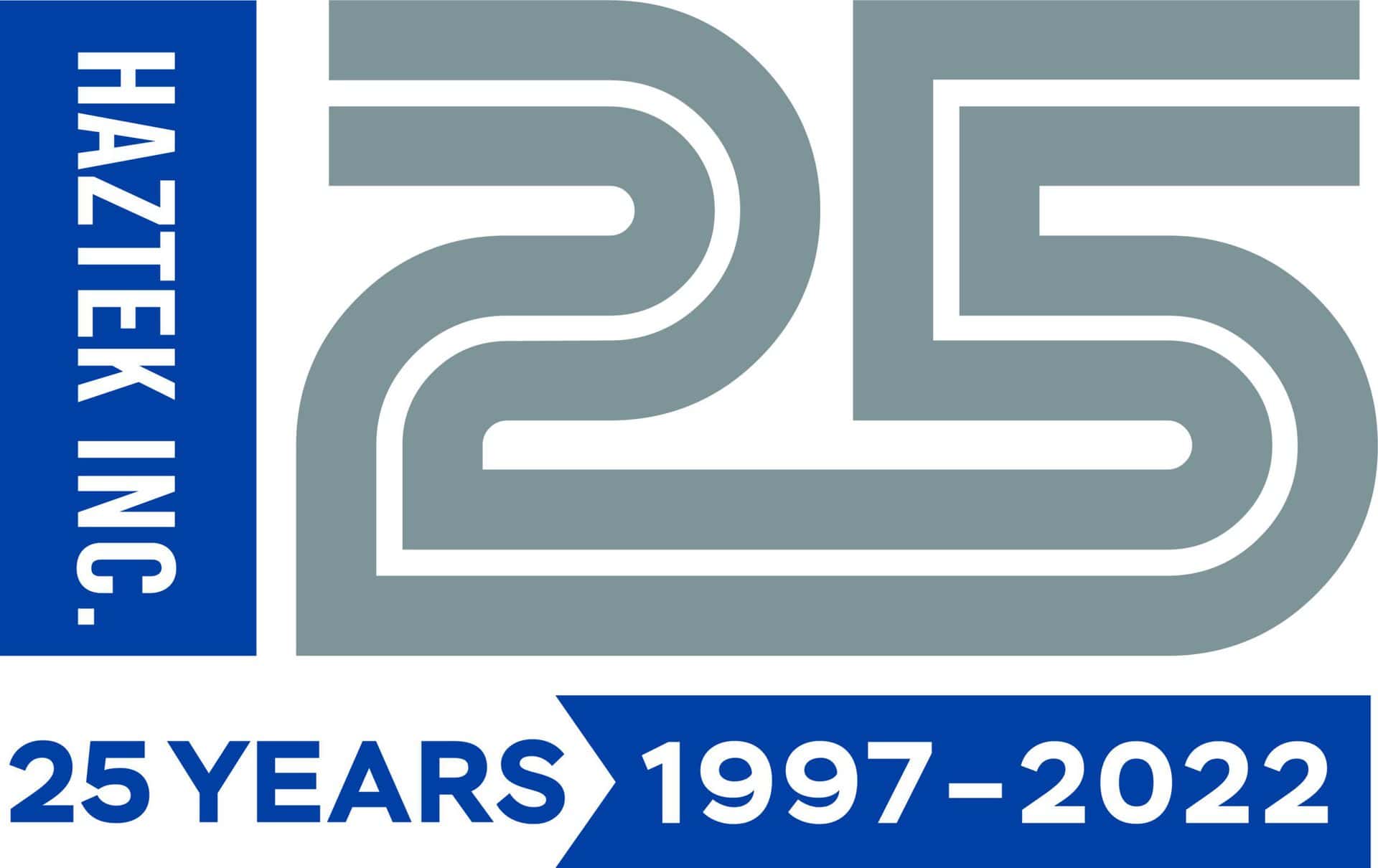By Matthew Vane Phillips, Principal Consultant, HazTek Inc.

In the last century, the construction industry has made considerable progress in establishing safer worksites while sending more employees home safely to their families. However, according to Bureau of Labor Statistics (BLS) data, the fatal injury rate has largely plateaued since 2008 and non-fatal injury rates have plateaued since 2015. Even more concerning, there’s been a slight increase in fatal injury rates since 2014.
This plateauing trend is occurring as environment, health, and safety (EHS) is increasingly being used as a key measure of success for construction and organizational performance. In fact, we would be hard-pressed to find a large-scale construction company that does not have an expressed commitment to “no injuries” or something consistent with “zero.”
While “zero” may be a noble commitment, it doesn’t necessarily equate to safe and, at worst, it can seduce us into thinking that safe work was the norm when it could have just as easily been good fortune. To get beyond these plateaus, we must challenge some of our current EHS thinking and assumptions, especially the role of people in safe work, and launch into a new era of EHS. At HazTek, we are calling this new era the “Leading Safely” era.
THE BEHAVIORAL ERA | CURRENT THINKING AND APPROACH
Over the last several decades, we have developed a fuller understanding of the types of hazards that can lead to serious injuries and fatalities and the role of human behavior in safe work. We call this current era the “Behavioral Era.”
A statistic—and defining feature—of this era that is often cited in corporate EHS programs is that human error accounts for almost 80% of all incidents and accidents. Perhaps not surprisingly, one of the primary goals in the Behavioral Era is to limit, minimize, and/or reduce human errors and the possible impact from these errors. If we take this assumption to its performative worst, people are considered liabilities to EHS performance and we will never be free from incidents and injuries until humans are essentially removed from the physical construction process.
Other defining features of the Behavioral Era include:
- Safety is measured and celebrated mostly in lagging terms, for example, TRIR, DAFW, FIR, and SIF.
- EHS is managed by EHS professionals and managers through systems, procedures, checklists, audits, and more.
- Incident investigations are conducted with the intent of finding a root cause(s)—often “human error.”
- We validate safe work practices primarily with regard to what we can “see,” such as worker behaviors, JSAs, policies, procedures, and eventually lagging indicators

THE LEADING SAFELY ERA | INTEGRATED SAFETY
HazTek’s Leading Safely is designed to help our industry disrupt our performance plateaus and reimagine EHS as a core function of the construction process. No one intends to get injured—with Leading Safely, we believe that people’s in-the-moment choices make sense to them based on what they perceive about their work environment and their tolerance for what they consider “acceptable” risk. We also understand that incidents or accidents rarely, if ever, have a single or small set of causes.
Leading Safely challenges today’s definition of safety success by expanding our current focus on behaviors and outcomes to include mindsets and decision-making, the latter always preceding the former. So, how do we influence positive mindsets and good decision-making across a diverse workforce amid the ever-changing environment of an active construction site?
Remember that relationships are paramount.
People matter; the best leaders make safe work both personal and vital at every level. Use anecdotal conversations, site cultural assessments, toolbox talks, observations, etc. to continuously understand how people on your sites are “seeing” things.
Help your supervisors think through and commit to meaningful actions that are drivers of world-class EHS performance.
When working with clients, I like to ask, “How do you know if you’re doing a good job with safety?” In most cases, supervisors’ replies follow some version of, “We achieve zero.” I find this interesting because:
- Managers and supervisors can’t control a lagging indicator (zero); and
- EHS is one of the few areas with a goal of perfection or near perfection (e.g., zero injuries).
I then reverse the question and ask, “How do you know if you have not done a good job with safety?” The response is usually, “Someone gets injured” (meaning, not zero). Also of note, when I ask how they know if they’re doing a good job for construction progress, their responses are considerably more detailed and backed up with designs, plans, and daily schedules.
Ask your crews/workers to tell you specifically how they will do their work safely… and let them fully respond before interjecting.
Time and time again, following an incident, we hear supervisors say, “I told them to work safely,” as though this instruction was sufficient. It is not sufficient… and it never will be.
Don’t settle for what we consider “simple explanations.”
We frequently hear that someone had “gotten complacent” or “made an error” as a causal explanation for why an incident or near-miss occurred. People don’t intend to get injured—they may make a judgment/decision that turns out to be a mistake that results in an injury. In hindsight, had they known—in the moment—that their choice would result in an injury, they would not have taken that action.
People make decisions based on what they “see” as acceptable risk every day, and a safe outcome often validates their decision about whether their action followed the best safe work practice or not. Multiple safe outcomes further validate their choice of actions and, with time, become the customary way of doing things.
In Leading Safely, citing complacency or human error has little explanatory value. Consider how often your own incident investigations cited human error and complacency as a root cause. Leading Safely is more interested in “why” that course of action made sense in the first place and what else was going on in the environment that shaped decision-making.

Use daily Toolbox Talks to underscore safety ownership.
Ensure that crews are engaged in discussing and planning their own safe work. If the crews don’t take safety ownership, they’re more likely to passively follow along with what they are told and they may not be able to effectively adapt to the regular changes in site conditions and new hazards that emerge in the daily construction process.
Make sure your site has a robust program for positively acknowledging safe work leadership and actions.
Consistent with the Behavioral Era, we frequently see celebrations for lagging EHS accomplishments (LTI-free hours, days without an incident, etc.). While well-meaning, these observances often have the distorted effect of inhibiting the reporting of near-misses, incidents, etc. Instead, focus on recognizing the safe work behaviors and leadership that you want to see embraced and repeated.
BEGIN YOUR LEADING SAFELY JOURNEY TODAY
As you will likely note, most of the suggestions in this article do not ask you to toughen, strengthen, or modify your EHS policies or procedures. Not to say that your existing procedures or policies couldn’t be strengthened; however, a common feature of our current era is that many organizations mistake having robust EHS policies and procedures as evidence of a good safety program and thereby a predictor of EHS outcomes.
Programmatically, this amounts to relying solely on a change at the tip of the proverbial iceberg to try and positively affect the entire iceberg. It has always been the case that EHS programs can only ever be as good as the people who implement them. People do not act in vacuums—humans are complex, with internal and external drivers based on experience, knowledge, biases, mood, and many other influences.
Shouldn’t the next era in EHS take this into account?

HazTek’s Principal Consultant Matthew Vane Phillips’ experience in transformation change and leadership, and his focused creative and consultative energy, have helped company executives, project safety leaders, and organizations to develop and deliver modernizations and advancements in safety approaches that lead to sustainable breakthroughs in safety performance.
In his role, Phillips guides and delivers HazTek’s Leading Safely program. The program is designed to build on HazTek’s well-known capabilities for safety management and integrate the most recent insights into human performance and safety system design and implementation.
Phillips brings over 16 years of global consulting experience to the company and has worked with corporate and government leaders to create meaningful results on some of the world’s largest and most complex projects across a range of industries, including energy, high tech, and infrastructure. He thrives on helping organizations and their teams remove obstacles to performance potential, delivering results beyond what is predictable or considered feasible.

About HazTek Inc.
HazTek’s brand of safety management is unlike any of its competitors. They consider leadership, communication, and cooperation the most important characteristics of their consultants and their services. They focus on delivering every service they offer – whether a training class, site inspection, or project safety oversight – within the context of their clients’ overriding corporate safety culture and performance goals.
Their new Leading Safely program helps clients reduce risk, transform leadership safety oversight, and achieve enhanced safety performance, while their new Fall Safety Solutions division offers customers a truly consultative approach to buying fall protection products, systems, and professional services.
HazTek’s mission is to enrich the health, safety, and well-being of their employees, their customers, and their communities. HazTek partners with companies to eliminate accidents and create safety cultures that reduce costs related to accidents and project delays and improve employee productivity and morale. The company’s services include professional on-site Safety Managers, Safety Audits and Inspections, EH&S Consulting, Culture-Building, and Leadership Programs, and Safety Training.
Established in 1997, HazTek services customers nationwide with locations in the Northeast, Southeast, Mid-Atlantic, Gulf Coast, and New England. For more information, call 888.842.9835 or visit www.haztekinc.com.
